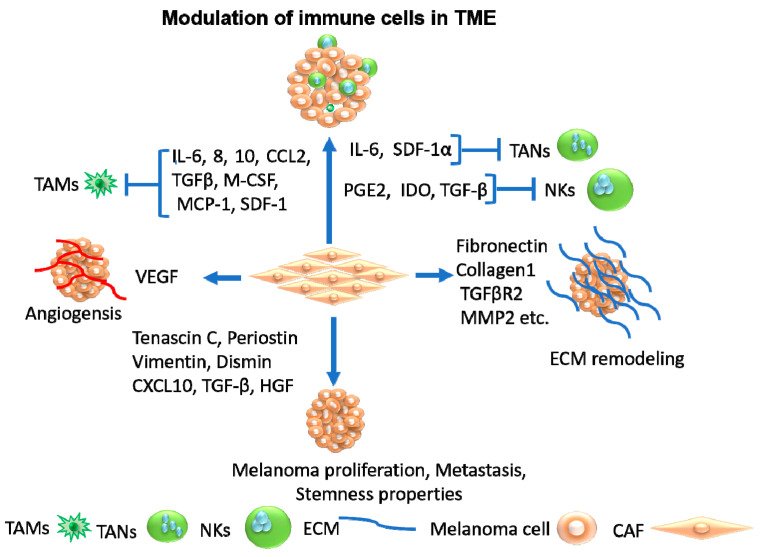Figure 4.
The mechanisms by which CAF-released factors trigger tumor angiogenesis, ECM remodeling, suppression of adaptive immunity, melanoma progression, metastasis, treatment resistance, and stemness properties. The induction of tumor angiogenesis is mediated by CAF-released VEGF. The suppression of adaptive immunity in the tumor immune microenvironment is attributed to the inhibition of tumor-associated macrophages (TAMs) by CAF-released IL-6, 8, 10, CCL2, TGF-β, macrophage colony stimulated factor (M-CSF), monocyte chemoattractant protein-1 (MCP-1), stromal cell-derived factor 1 (SDF-1), as well as the inhibition of tumor-associated neutrophiles (TANs) by CAF-released IL-6 and SDF-1α and the inhibition of natural killer cells (NKs) by CAF-released prostaglandin E2 (PGE2), indolamin-2,3-dioxygenase (IDO), and TGF-β. The remodeling of the ECM is mediated by CAF-released fibronectin, collagen1, TGFβR2, and matrix metalloproteinase-2 (MMP2). The induction of melanoma proliferation, metastasis, and stemness properties is mediated by CAF-released tenascin C, periostin, vimentin, dismin, chemokine (C-X-C motif) ligand 10 (CXCL10), TGF-β, and HGF.

